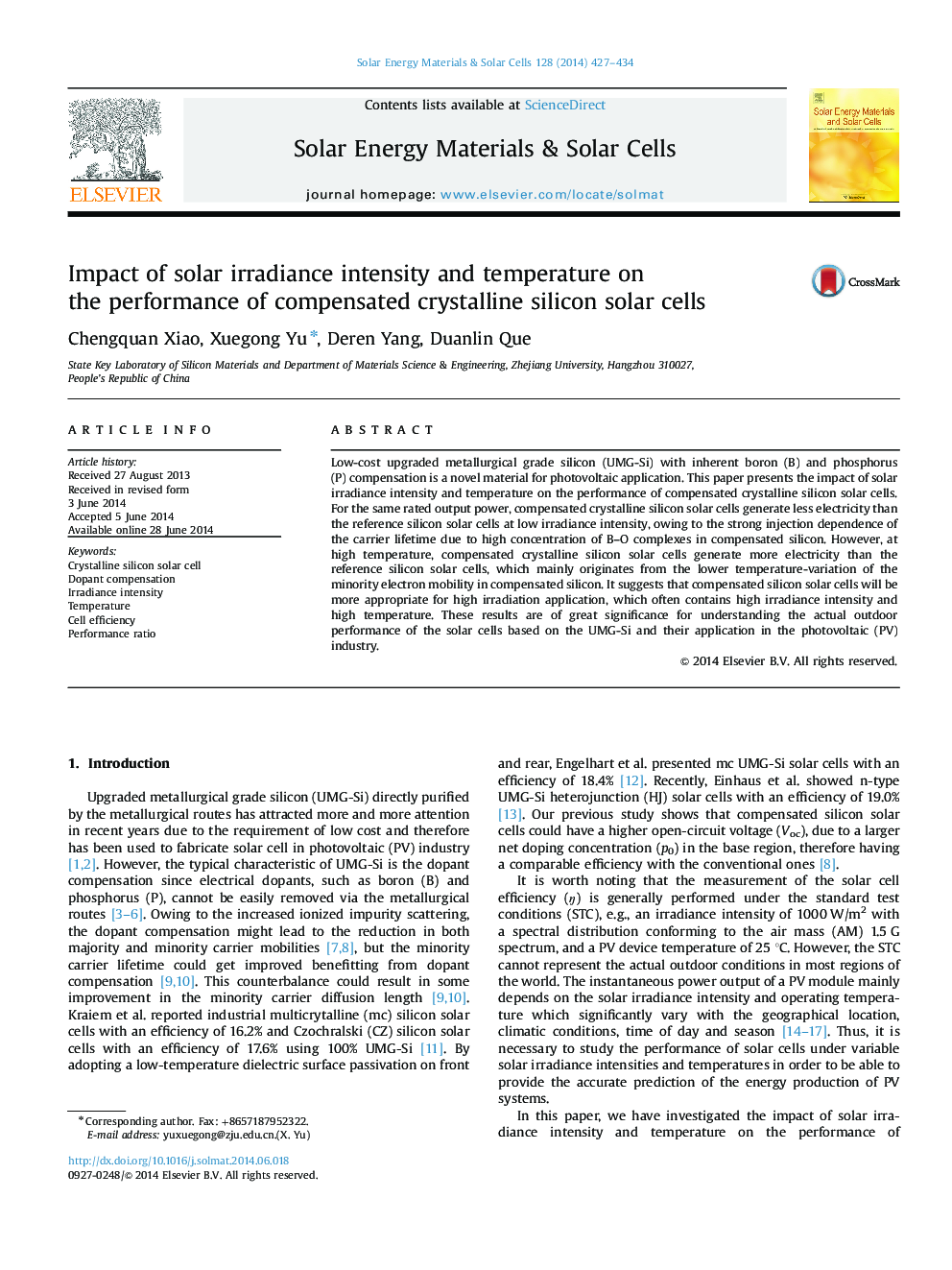| Article ID | Journal | Published Year | Pages | File Type |
|---|---|---|---|---|
| 78019 | Solar Energy Materials and Solar Cells | 2014 | 8 Pages |
•At low irradiance intensity, the compensated cells generate less electricity.•At high temperature, the compensated cells generate more electricity.•The compensated cells will be more appropriate for high irradiation application.
Low-cost upgraded metallurgical grade silicon (UMG-Si) with inherent boron (B) and phosphorus (P) compensation is a novel material for photovoltaic application. This paper presents the impact of solar irradiance intensity and temperature on the performance of compensated crystalline silicon solar cells. For the same rated output power, compensated crystalline silicon solar cells generate less electricity than the reference silicon solar cells at low irradiance intensity, owing to the strong injection dependence of the carrier lifetime due to high concentration of B–O complexes in compensated silicon. However, at high temperature, compensated crystalline silicon solar cells generate more electricity than the reference silicon solar cells, which mainly originates from the lower temperature-variation of the minority electron mobility in compensated silicon. It suggests that compensated silicon solar cells will be more appropriate for high irradiation application, which often contains high irradiance intensity and high temperature. These results are of great significance for understanding the actual outdoor performance of the solar cells based on the UMG-Si and their application in the photovoltaic (PV) industry.
